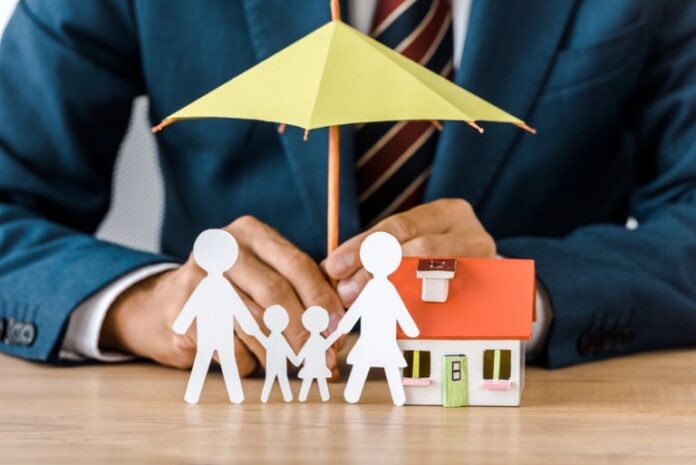Ensuring your home remains a sanctuary through every stage of life requires an increasingly proactive approach to safety. A secure home doesn’t just happen by accident; it evolves as your family does. Understanding the specific risks and needs that accompany each stage—whether it’s the curiosity of a toddler, the growing independence of a school-aged child, the active yet busy routines of adults, or the unique vulnerabilities faced by older adults—is key to effective accident prevention.
Making your living space safe often begins with awareness, but it is best supported by thorough planning. For broader peace of mind, consider layering these precautions with comprehensive insurance. Reliable coverage, such as the policies provided by thehartford, can serve as a financial safety net in the event of unforeseen circumstances, providing every household member with added protection and peace of mind.
As families evolve, so should their environment. Maintaining a safe home means adapting to new circumstances—whether that’s keeping cleaning supplies locked away from little explorers or upgrading lighting to prevent falls for older adults. Each carefully considered change, no matter how small, can greatly reduce the risk of injuries and accidents. With all these measures in place, let’s explore tailored strategies for every stage of life, ensuring that your home remains as safe and welcoming as possible for everyone who walks through its doors.
Safety Measures for Infants and Toddlers
Significant developmental leaps mark the earliest years of life, the acquisition of new motor skills, and an insatiable curiosity. However, these same traits also make infants and toddlers particularly vulnerable to potential hazards in the home. Safety for this age group begins with anticipating their movements and tendencies and preparing every room well in advance of their arrival.
Anchoring heavy furniture is especially vital, as climbing becomes a favored pastime. Flat-screen TVs, tall bookcases, and dressers can tip with little warning—anchoring these items to the wall helps prevent possibly life-threatening accidents. Likewise, stairs pose significant risks, so sturdy safety gates at both the top and bottom can avert falls and keep your little ones from wandering unsupervised.
- Secure Furniture: Anchor all heavy or tall furniture firmly to walls. The curiosity of infants and toddlers often leads them to pull, climb, or tug on things within reach. By anchoring furniture, you not only prevent injuries but also create an environment where kids can explore safely. Learn more about infant and toddler safety.
- Install Safety Gates: Fit sturdy gates at staircases and doorways to keep children from hazardous zones. Select gates that are securely mounted, rather than pressure-based models, for key areas.
- Use Outlet Covers: Children are naturally drawn to outlets at their eye level. Placing safety covers over electrical outlets removes the temptation and reduces the risk of electric shock or burns.
- Store Hazardous Materials Safely: Store cleaning agents, medications, knives, batteries, magnets, and other danger zones high out of reach, or lock them away. Cabinets fitted with childproof locks and latches can offer valuable peace of mind.
Safety Tips for School-Aged Children
As children begin school, their world expands far beyond the walls of their homes. They encounter new risks and require set guidelines and education to make smart, safe choices. School-aged children should be familiar with basic emergency procedures, such as dialing 911 or safely evacuating in the event of a smoke alarm activation.
Conversations about internet use are also crucial at this stage, as children begin exploring digital spaces that can expose them to online threats or inappropriate content. Rules regarding computer and phone use, privacy, and responsible posting will help create digital safety habits that last a lifetime.
- Educate on Emergency Procedures: Teach children how to use the phone in an emergency, and have family discussions about what to do in case of fire, severe weather, or if they become separated from a parent. Practice regular safety drills to reinforce these skills.
- Set Rules for Internet Use: Discuss proper internet behavior, privacy, and the importance of never sharing personal details with strangers online. Set up parental controls as necessary and check in frequently with your child about their online experiences.
- Ensure Safe Play Areas: Designate playrooms or backyard zones where kids are free to play safely. Inspect toys and equipment regularly for signs of wear and tear, and remove any broken or hazardous items immediately. Help your kids understand the importance of putting away their toys to prevent trips for everyone in the home.
Home Safety for Adults
Adults not only maintain their own safety but also set the tone for a se and well-organized household. Homeowners and renters alike benefit from vigilance, preparation, and routine maintenance. Installing a network of working smoke and carbon monoxide detectors on every floor is a foundational step that can save lives. These devices provide crucial early warnings in the event of a fire or invisible gas leaks.
Additionally, every adult should know where emergency kits and resources are stored, including flashlights and first aid supplies. Kitchens, often the heart of the home, are also where many house fires begin. Practicing attentive and safe cooking habits, as well as knowing what to do in the event of a grease fire or accidental injury, further enriches your overall safety plan.
- Install Smoke and Carbon Monoxide Detectors: Place detectors in hallways, near bedrooms, and in kitchens. Test monthly, replace batteries twice a year, and follow local guidelines for optimal placement. Early alerts can mean the difference between a close call and tragedy.
- Keep Emergency Kits: Assemble a complete first aid kit and make sure everyone is aware of its location. Include extra flashlights, batteries, water, non-perishable food, and backup chargers for essential devices. Develop a written emergency plan that details family contact information.
- Practice Safe Cooking Habits: Never leave stovetops unattended, keep flammable materials away from open flames, and store fire extinguishers within reach. Clean up spills promptly and educate all family members about kitchen fire safety.
Ensuring Safety for Older Adults
As family members age, new challenges arise, including decreased mobility and balance, as well as vision or hearing loss. Falls are one of the most significant, falls often leading to serious injury. To help loved ones stay confident and self-sufficient, make the home more accessible and secure.
Strategic modifications—such as grab bars in bathrooms, railings on both sides of stairways, and non-slip mats in showers—are simple but dramatically lower the risk of dangerous slips and falls. Medication safety is also vital, as multiple prescriptions can increase the risk of harmful interactions or side effects. Effective communication with healthcare providers can help seniors better manage their health and reduce the risk of complications from medication errors.
- Prevent Falls: Install grab bars, handrails, and non-slip mats anywhere needed—bathrooms, hallways, and especially on stairs. Ensure that entryways are level and free from loose rugs or clutter. Explore more home safety tips for older adults.
- Review Medications: Keep a dated list of prescriptions, including dosages and the names of your physicians. Schedule regular reviews with your doctor or pharmacist to minimize negative side effects and ensure safe medication management.
- Enhance Home Security: Install peepholes, improve exterior lighting, and utilize video doorbells or alarm systems to deter potential intruders. Security measures designed for ease of use are particularly beneficial for older adults who may have slower response times or reduced physical abilities.
General Safety Practices for All Ages
Some safety measures transcend age and circumstance, forming the foundation of any secure home. Keeping walkways clear of toys, shoes, and wires drastically cuts the risk of everyday trips and falls for everyone in the household. Proper lighting, especially in areas such as staircases and high-traffic zones, helps prevent late-night mishaps. Conducting regular home inspections to catch problems like loose stair rails, broken locks, or faulty electrical outlets ensures every part of your house is functioning safely. Combine these basics with modern solutions for the most robust and up-to-date safety net.
- Maintain Clear Pathways: Ensure hallways, stairs, and well-used areas are free from obstructions. Secure or remove throw rugs and organize electrical cords to remove tripping hazards.
- Ensure Proper Lighting: Supplement natural and ceiling lights with nightlights in bedrooms, bathrooms, and halls. Consider installing motion-detection lights both inside and outside to enhance visibility as family routines evolve.
- Regularly Inspect the Home: Conduct seasonal reviews to spot and repair issues—like frayed wires, loose handrails, or malfunctioning smoke detectors—before they escalate. Preventive maintenance helps avoid many common household injuries and accidents.
By tailoring your safety strategies to the evolving needs of every household member—and combining practical steps with the foresight to adapt—your home can be a true haven for all. Keeping up with new safety innovations, staying informed, and considering comprehensive insurance protection from trusted sources ensures the well-being and peace of mind of your family throughout every stage of life.




